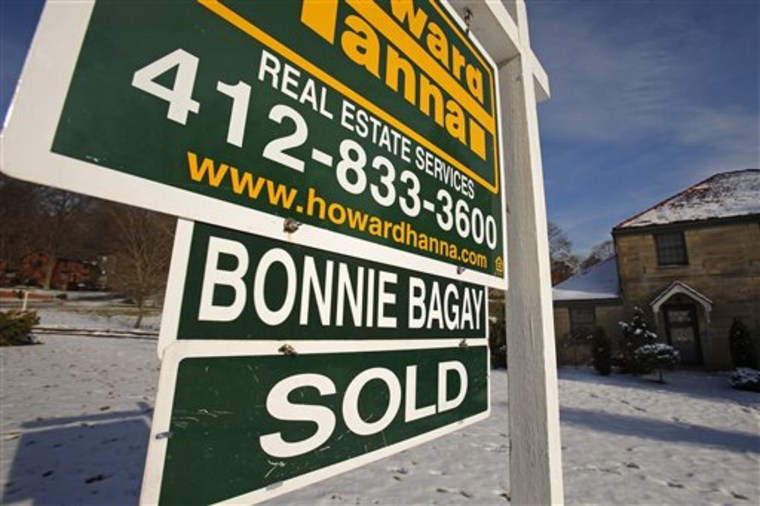Are you shopping for mortgages and comparing them to see which one is the better deal? Were you offered a higher-priced mortgage? How can you even tell?
Consumers in search of a mortgage should be especially wary of higher-priced loans when comparing rates and fees. It becomes especially important in the shopping phase because lenders quote rates and fees competitively in an attempt to capture market share. But be careful — one lender's fees and lower interest rate might actually be a higher-priced loan even if it seems like a better offer. So this is where the annual percentage rate (APR) comes in.
The APR is a calculation lenders are required to provide on all forms of advertising and disclosures. The annual percentage rate blends your closing costs, adds them to the loan amount and re-amortizes the calculation over the term of the loan. APR is simply an expression of loan cost. The higher your APR, the higher-priced your mortgage. APR is a way to make an apples-to-apples comparison of loan costs.
A “higher-priced” loan, by industry standard, is any loan with an APR that is 1.5 percentage points (or more) above the weekly offered prime rate by Fannie Mae or Freddie Mac for a fixed-rate or adjustable-rate loan. (The prime rate is an estimate of the rate borrowers with very good credit get.)
So the next threshold is a “high-cost” mortgage, which, according to the Consumer Financial Protection Bureau, is “a first mortgage with an APR of more than 6.5 percentage points higher than the average prime offer rate.” While a "higher-priced" loan is considered a traditional loan offered by Fannie Mae and Freddie Mac, you'd typically have to go to a private investor for a "high-cost" loan. Under current regulations, the Consumer Financial Protection Bureau will not allow a high-cost loan to close unless the interest rate is low enough to offset the APR thresholds.
How to Figure Out If You Have a Higher-Priced Loan
Once you have offers from various lenders, here’s how to compare them:
- Make sure you have your offers in writing.
- Take the prime offered interest rate corresponding to the most current week.
- If the APR associated with your mortgage offer is 1.5 percentage points higher than the prime rate, you have a higher-priced loan.
Discount Points
Discount points are fees paid by the borrower to the lender in exchange for a lower interest rate on the mortgage – which means lower monthly mortgage payments. When you do this, however, this increases the APR, because even as the interest rate drops, the overall costs still rise because of the fees paid up front.
For example: A first mortgage in the amount of $300,000 at a 4.375 percent interest rate might be offered to a borrower with a discount fee in the amount of $1,500. The same lender might offer the same 30-year fixed rate without the $1,500 fee in exchange for an interest rate of 4.5 percent. The higher interest rate without the fees will result in a lower APR. While this will lead to higher monthly mortgage payments, choosing the higher interest rate/lower APR can be useful to borrowers who are short on cash that would be needed on the higher APR loan.
These Fees Raise the Cost of Your Loan
The following fees and costs associated with closing on your home loan will be included in your APR.
- Discount points
- Loan origination fee
- Mortgage broker or lender fee
- Tax/flood service fee
- Mortgage insurance premium
- Title insurance
- Escrow fee
- Recording fee
These fees are all one-time fees, except for the mortgage insurance premium (if it is a monthly premium rather than a single-pay premium). Additionally, fees such as property taxes and insurance are considered normal carrying costs associated with owning a home and thus do not have any effect on the cost of a loan.
How to Lower the Price of a ‘High-Cost’ Loan
If you’re worried your loan could be considered a “high-cost” loan and will not be able to be made by the lender, the following can be done to lower the price and allow the loan process to close:
- Reducing the purchase price
- Reducing the loan amount
- Obtaining a seller credit in a purchase transaction
- Reducing the discount point (which usually means increasing the interest rate, thereby reducing total fees)
- Reducing the interest rate with investor renegotiation (lender offers you a better interest rate if the market has improved since locking in)
- Lengthening the term of the loan (applicable if initially looking for a shorter-term mortgage, like a 15-year or a 20-year, for example)
Mortgage tip: Higher-priced loans at lower amounts — like $125,000, for example — can become problematic. Lenders have a certain profit margin they must account for. If the set margins do not allow for adjusting fees to meet higher-priced loan thresholds, lower loan amounts can sometimes be more challenging to obtain than higher loan amounts.
More from credit.com:
Why You Should Check Your Credit Before Buying a Home
How to Search for Your Next Home
How to Get Pre-Approved for a Mortgage
Scott Sheldon is a senior loan officer and consumer advocate based in Santa Rosa, Calif. Connect with him at Sonoma County Mortgages. More by Scott Sheldon
